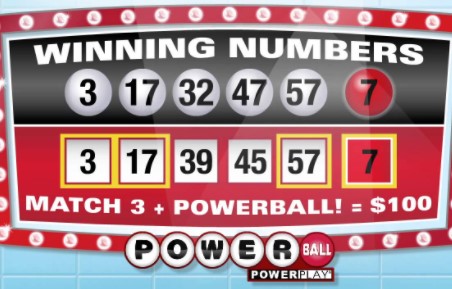To comprehend this specific strategy, let us begin with the definition of a perpetual motion machine. A machine that performs constant motion is a hypothetical machine that can run indefinitely. with no energy supply, which means that it never ceases once started. The point is that the device generates enough energy out of its capacity to keep pushing itself further.
Transferred into the Powerball lotto world, once we invest 4 Dollars, we could play Powerball indefinitely without including extra money. I believe all of you would agree that it seems compelling and would keep you in the game long enough to win the big jackpot finally.
The question is, how can we build that system?
Analyzing the nine ways to win, you discover that for choosing the ideal Powerball amount, you receive 4 US dollars.
1 to 38.32 the chances to win this game and that appears to be a fair chance compared with the 292,201,338 we spoke before. The top is a ticket price of only two Dollars, and we will need to hit the ideal Powerball number only every 2nd time to get our perpetual motion machine operating. It means we play two rounds and spend four bucks, calling it one around right, we get our four dollars back and pay again. Get it when the machine is fired up. It is going to run forever.
We must then locate our formula to select the ideal Powerball number from the 26 numbers on the lotto slide. Let us start the analytics.
According to Powerball numbers from the draws from January 2016 to January 2017 mathematically, the preceding two drawings don’t replicate in the next interest. Did it never occur? Yes, it happens infrequently, but remember we will need to get it right every 2nd time to remove these amounts from a statistical point of view.
After that, we get a pool of 24 amounts, and here it gets tricky, and the various pros have here all their own opinion that they can statistically prove. I stick with the charges that had the least pulls because I feel that the number level out in the end.
According to the definition, a perpetual motion machine is a hypothetical machine. The previous step to find the ideal amount is developed in my theory. If you find yours, I’d be happy you share it.
My High School’s older son and he’s totally into math. The other day he had been doing his homework, graphical functions, and calculating the outliers of a pool when my friend from our lotto group called me and requested the Powerball numbers I’d likely pick this week. My son listens to the dialogue, and after I hung up, he gave me this adolescent look of”oh boy,” if you know what I mean. He then asked me if I genuinely think by selecting random numbers I could acquire. He said to use some data to define the outliers and proceed with them. I just looked at him and said, “that is none of your company Mr. Smart” Later that night, I researched the internet and couldn’t believe what I discovered.
When it comes to data, the name Carl Friedrich Gauss, a German mathematician in 1800, contributed significantly to the evolution in the fields of number theory and statistics. Carl Gauss is one of the most influential mathematicians ever.
He devised the Gaussian Theory. Many people also know this as the bell curve. The mathematical use of his probability theory defies common ideas. We usually regular folks would select the most drawn numbers seeing as they often come up, or the least drawn amounts thinking since these have not come up in a long time, I will select them in the event they do finally get chosen. I mean, even a broken clock is right two times per day.
Mr. Gauss’s theory says that all amounts must first be aligned in a bell curve type chart. To make a bell curve, we have to line up our historic winning pieces. This research revealed was that when I took, say, all winning numbers from the previous two decades, I would find a curve where 64 is the maximum attracted amount and 1 and 45 are the least.
These men at Powerball plans say that in the case above, the amount 64 gets chosen the most, while on the borders, numbers 1 and 45 get chosen the least. The point is that we need to have numbers, not from the top of the sides, but we will need to overlay a rectangular box over the center where most of the mixes are struck. You see, they assert that the likelihood of getting 64 and a one or a 45 are so minute, it only makes sense that amounts that appear quite often are more likely to get hit.
I will be looking deeper into this and other posts. I think there could be something to this. I know one doesn’t actually become wealthy by pure luck, but maybe this logic takes out the”Luck,” and we will have pure success!

